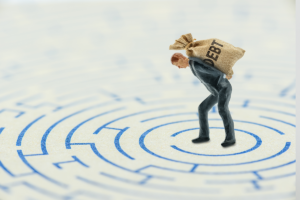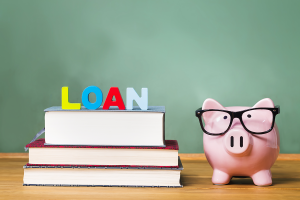How to Avoid a Growing Credit Card Balance

What Is a Credit-builder Loan and How Does It Work?
04/08/2024
Start Making Good Money Moves by Destroying Limiting Beliefs
05/03/2024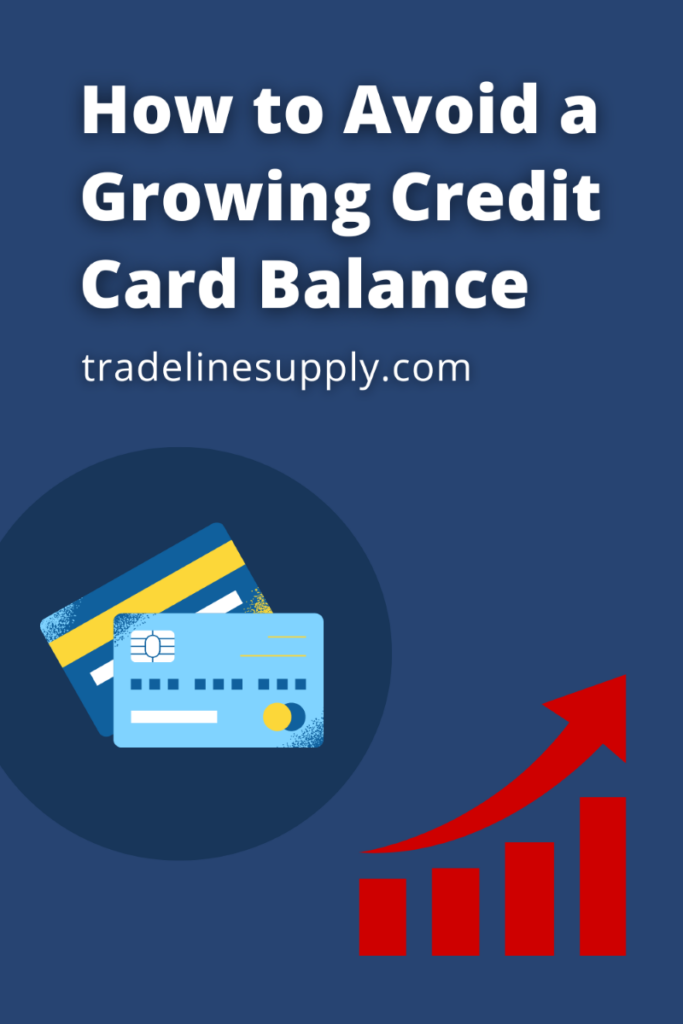 Credit card debt is common. Many households are facing growing credit card balances. But this type of debt, with its notoriously high interest rates, is one of the hardest to climb out of. Once you slide into credit card debt, it can be difficult to pull yourself back out.
Credit card debt is common. Many households are facing growing credit card balances. But this type of debt, with its notoriously high interest rates, is one of the hardest to climb out of. Once you slide into credit card debt, it can be difficult to pull yourself back out.
If you want to avoid taking on credit card debt, it will require some thoughtful strategies. The good news is that it’s entirely possible to avoid taking on this type of debt.
We will explore why credit card balances are growing, how these balances grow, and how you can stay out of credit card debt.
Credit Card Balances Are Climbing
Credit card balances are climbing across the country. Recent data from TransUnion showed that the average credit card debt per borrower in January 2024 was $6,295. That’s up from an average balance of $5,795 per borrower in January 2023.
Additionally, the Federal Reserve reported that credit card balances topped $1 trillion in the second quarter of 2023. After mortgage debt, credit card balances represented the most substantial debt category for American households.
Why Are Credit Card Balances on the Rise?
Based on the numbers, it’s clear that credit card balances are on the rise. But what might be less obvious is why credit card balances are increasing. Here are some of the many factors contributing to rising credit card debt.
Inflation
With this recent bout of inflation, households started to feel the pinch in early 2021. Since then, the Federal Reserve has been attempting to combat high inflation by raising interest rates.
But with the cost of living being significantly higher, many households are having trouble making ends meet. When it’s difficult to buy the basics, some might turn to credit cards to get what they need.
Higher Interest Rates
The Federal Reserve has been steadily increasing interest rates since mid-2022. As the Fed raises the federal funds rate, the interest rates attached to credit cards also tend to grow.
In 2021, the average credit card interest rate was 14.60%, according to the Federal Reserve. But in April of 2024, according to LendingTree, the average interest rate on current card credit accounts is 21.59%. That’s a significant jump. And for new credit card offers, consumers can expect to be offered an average interest rate of 24.66%.
As credit card interest rates get higher and higher, interest accumulates on account balances faster and faster. With that, it’s easy for credit card balances to spiral out of control.
How Does Credit Card Debt Grow?
Inflation and higher interest rates are two reasons why credit card balances are on the rise. But if you aren’t sure how credit card debt grows, you might still be confused as to how these factors would contribute to a higher credit card balance.
Below is a closer look at how credit card debt grows.
High Interest Rates
Credit cards come with notoriously high interest rates. As mentioned above, the average credit card interest rate is above 20% as of April 2024. In contrast to a 24-month personal loan, with an average interest rate of 11.48%, credit cards tend to be one of the most expensive ways to borrow money.
If you carry a balance on your credit card, the interest payments can push it higher than you originally thought possible. Credit card users have the option to pay off their balance in full each month without dealing with any interest. But if you miss the grace period, you’ll get stuck with expensive interest charges.
Minimum Payments
When you get your credit card bill, you’ll have the option to make a minimum monthly payment. The minimum payment option is undeniably tempting, especially if you don’t have the cash on hand to cover your entire balance. But the reality is that making the minimum payments to your credit card balance can keep you stuck in credit card debt for years.
For example, let’s say you have a $5,000 credit card balance with a 20% APR. If you make the minimum monthly payment of $100, it will take you 106 months to pay off the balance. Along the way, you’ll pay an additional $5,503 in interest payments on top of the principal balance of $5000.
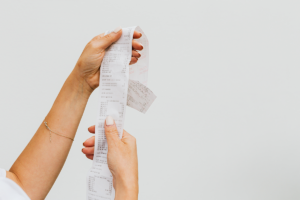
Sticking with the minimum payment can leave you in credit card debt for years to come.
Growing Expenses
Inflation has hit households across the country. You’ve likely already noticed the impacts. For example, you might have seen higher prices at the grocery store or at the gas pump. These expenses add up to the average household spending more to get what they need.
As your expenses grow, your income may or may not keep pace with the costs. If your expenses outpace your income, you might find yourself turning to a credit card to make up the difference.
How to Stay Out of Credit Card Debt
Credit card debt is a drain on your financial resources. Instead of directing your funds toward positive financial goals, you could be stuck paying off debt for years. Once you are in credit card debt, it’s often difficult to dig yourself out of the hole. If possible, take action to avoid taking on credit card debt in the first place.
Below are some strategies you can use to avoid getting into credit card debt.
Only Spend What You Can Afford to Pay Off Each Month
When you open an unsecured credit card, you might be surprised by the credit limit you are provided. In many cases, you’ll find a credit limit much higher than you can reasonably afford to spend and pay off each month. Instead of being tempted by the credit limit, it’s critical to spend within your means. If you cannot afford to pay off a purchase this month, putting it on your credit card could be a recipe for disaster.
As you use your credit card, only spend what you can afford to pay off each month.
If you can stick to paying off your entire credit card balance each month, you won’t have to worry about interest charges spiraling out of control.
Make More Than the Minimum Payment
Credit card companies give you the option to make a minimum monthly payment. At first glance, the minimum payment can seem like a welcome reprieve for your budget. But the reality is that only making the minimum payment could keep you in debt for years.
For example, let’s say you have a credit card balance of $10,000 and a 25% APR. If you only make the minimum payment of $220, it will take 133 months to pay off your credit card balance. In addition to the $10,000 in principal payments, you’ll make $19,181 in interest payments. With that, you’ll pay almost triple the sticker price for the items purchased with your credit card.
Even if you aren’t able to pay off your entire balance each month, do your best to make more than the minimum payment. Otherwise, you might find yourself dealing with expensive credit card debt for a very long time.
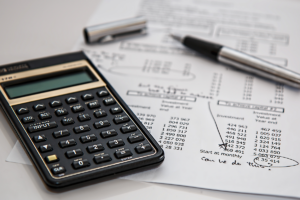
Avoid Cash Advances
The interest rate assessed on your credit card purchases is high. However, the interest rate attached to cash advances from your credit card is typically even higher than your purchase APR. Not only is the cash advance interest rate usually higher, but many credit card companies don’t give you a grace period before the borrowed balance starts to accrue interest charges.
If possible, avoid taking out any cash advances on your credit card. While the process might seem convenient, you could start dealing with higher interest charges immediately.
Stick to a Budget
The word budget might strike fear into your heart. But a thoughtful budget can help you meet your needs without falling into credit card debt. Essentially, sticking to a budget requires self-discipline to avoid overspending on any purchase you can’t afford for the month.
As you build a budget, it’s important to divide out your needs from your wants. In many cases, the lines between your wants and needs are blurred. But if you are having trouble making ends meet, it’s critical to be clear about the situation. You’ll need to prioritize your needs over your wants. If a want doesn’t fit into your budget, then you might have to skip it for the month.
Build an Emergency Fund
An emergency fund is one of my favorite financial tools. Whether we like it or not, life doesn’t always go as planned. If life throws a wrench in your budget, a stocked emergency fund can help you absorb the extra costs without leaning on your credit card.
Some financial emergencies you might face include an unexpected car repair, storm damage to your home, and medical costs. When a big expense comes into your life unexpectedly, an emergency fund will help you avoid taking on credit card debt.
Many experts recommend building an emergency fund with three to six months’ worth of expenses set aside. Of course, you can decide for yourself the size of your emergency fund. You might start with a smaller fund if you are currently paying off debt or you might build a bigger fund if you have an unpredictable income. In any case, an emergency fund of any size can help you avoid credit card debt when faced with an unexpected expense.
Pick Up Extra Income
If you are having trouble making ends meet, picking up extra income can help you avoid taking on credit card debt. The reality is there is only so much you can cut out of your budget. But your earning potential is more flexible. With a higher income, you’re more likely to pay off your credit card balance in full each month.
Some potential ways to increase your income include asking for a raise at work, working extra hours, picking up a side hustle, and selling items you don’t need. Don’t be afraid to get creative with earning extra money. If you are able to increase your income, funding your purchases on a monthly basis might not be as difficult.
Close Your Credit Cards (In Extreme Circumstances)
Credit cards can be a useful financial tool. With responsible usage, you can build credit and earn perks. But credit cards aren’t the right fit for everyone.
If you struggle to stick to a budget when a credit card is in your wallet, then it might be a risk to continue carrying the card. Take a minute to evaluate your spending habits. If you are overspending for an emotional reason or realize that you have a risky approach to managing your credit card, then it might be a good idea to close it.
Frequently Asked Questions
What Is the Smartest Way to Get Rid of Credit Card Debt?
The most efficient way to get rid of credit card debt is to funnel extra money toward the credit card with the highest interest rate. After you pay off that balance, use the funds to pay off the credit card with the next highest interest rate. Repeat the process until you’ve paid off all of your credit cards. This is called the “avalanche” method of paying off debt.
Are Credit Cards Bad?
Credit cards are a financial tool. You can use them in a positive way that helps you build credit. But you can also get yourself into credit card debt if you use them irresponsibly.
The Bottom Line
Credit card debt is difficult to get out of—so implement these strategies that help you avoid taking on credit card debt in the first place. Most importantly, as you navigate using your credit cards, avoid spending more than you can afford to pay off each and every month.


